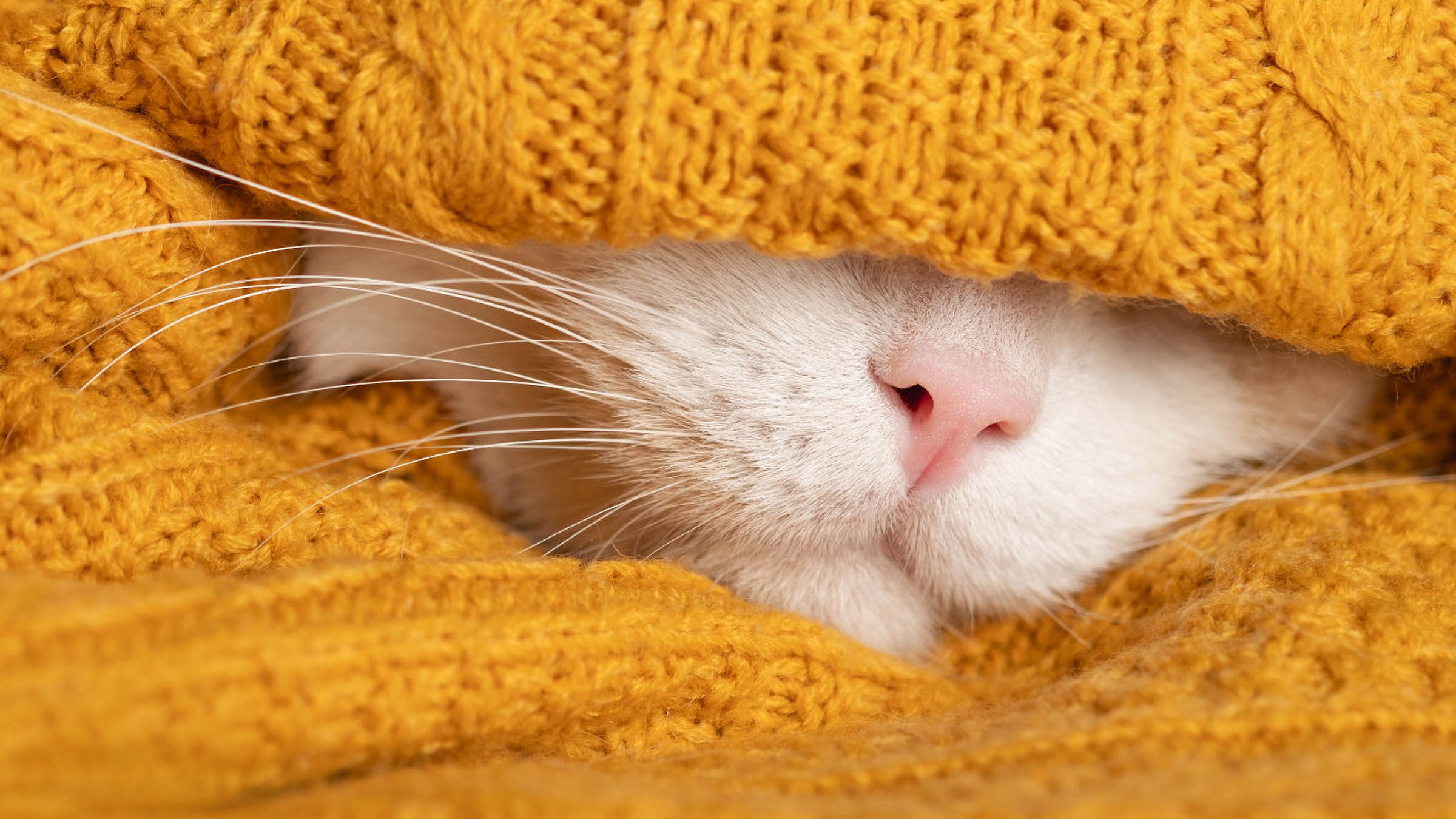
Cat flu
Is your cat hardly eating and is tired, with watering eyes and a runny nose? If you're only thinking of a harmless cold, you could be wrong. Because behind every runny nose there can also be a serious case of cat flu. Treating cat flu is usually challenging, especially as it can become chronic and thus accompany your cat for a long time. If you suspect that your cat has cat flu, you should see a veterinarian as soon as possible. The sooner your feline friend can be treated, the better, because if cat flu is not recognized and treated quickly enough, it can affect your cat in the long term.
The good news: with enough background knowledge, you can support your cat effectively, such as by ensuring that your furry friend's immune system is intact - this is one of the most important measures when it comes to cat flu.
DEFINITION
What is cat flu?
Cat flu is an infectious disease of the respiratory tract that can also affect the eyes or mouth. Cat flu is most commonly caused by viruses, especially herpes viruses. Unvaccinated animals, young cats and outdoor cats are particularly at risk. Infection usually occurs directly through contact with a sick cat (droplet infection). However, cat flu can also be transmitted through objects, humans or food.
If your cat's immune system is weakened by the virus, other pathogens such as bacteria and other viruses also have "free rein" and can lead to secondary infections. For example, the conjunctiva of the eyes or the cornea can also become infected.
SYMPTOMS
Symptoms of cat flu
Clinical symptoms of cat flu appear just a few days after infection and, depending on the causative pathogen, they can manifest themselves in different ways. Typical symptoms are
- Fever
- Tiredness (lethargy)
- Loss of appetite with weight loss
- Coughing
- Sneezing
- Nasal and / or eye discharge
- Conjunctivitis
- Encrustations on the nostrils
- Breathing difficulties, coughing and rattling noises when taking a breath
- Redness or swelling of the mucous membrane of the mouth
CAUSES
How does cat flu develop?
As there are many pathogens that can be involved in the development of cat flu, it is referred to as cat flu complex. In most cases, however, these are herpes viruses or caliciviruses. Sometimes bacteria, namely Bordetella and Chlamydia, are also (partly) responsible. The main risk is a weakened immune system, which can occur in young animals or chronically ill animals, for example. However, stress can also weaken the immune system. Outdoor cats are considered to be particularly at risk as they have much more contact with other cats than domestic cats and can therefore become infected more easily.
DIAGNOSIS
Recognizing cat flu
If your cat suffers from cat flu, a clear, thin discharge initially comes out of the eyes and nose. Later, this discharge may turn yellowish or become encrusted and make breathing difficult. If your cat sneezes or coughs frequently, you should definitely visit your veterinarian. Cat flu is usually diagnosed based on the typical symptoms. A swab of the mouth, eyes and nose can be used to confirm the diagnosis and determine the pathogens present. With these results, your cat can now be given targeted treatment.
TREATMENT
Treating cat flu
The type of treatment for cat flu depends primarily on which viruses or bacteria have caused the disease in your cat. In addition, the symptoms of the disease that your cat is showing are treated specifically so that it feels better again quickly.
The various treatment options for cat flu include:
- Antiviral treatment with so-called antivirals
- Antibiotics (if bacteria are involved)
- Cough medication (e.g. expectorants)
- Inhalation therapy
- Anti-inflammatory agents
- Symptom-related medication such as appetite stimulants
In addition to the measures mentioned above, you can support your cat's immune system so that your pet is better able to defend itself against pathogens. Immunoglobulins or certain feed supplements can help with this. Natural veterinary medicines such as swallowwort can also support your furry friend's immune system. In addition to medication, it is important that you regularly clean your cat's nose and eyes. If your cat no longer eats on its own, feeding it with food paste may help. Your veterinarian can advise you on this. It may also be necessary to administer infusions to cats that do not drink enough water. If your cat is an outdoor cat, it must not leave the house until after recovering from the flu, as it could infect other cats.
PREVENTION
What can I do as a pet owner?
What is the best way to protect your feline friend from cat flu? The most important measure is vaccination: young cats in particular should be vaccinated against cat flu for the first time at 8 weeks of age so that they develop basic immunity as quickly as possible. Very important: Be sure to remember the subsequent booster vaccinations, as this is the only way to ensure your cat is adequately protected.
A stable and intact immune system offers the best protection in addition to the vaccination: this allows your cat to successfully fight off pathogens and, ideally, stay fit and healthy. Other helpful steps also include:
- Regular cleaning of feeding areas and litter box
- Avoid stress
- Plenty of exercise, but also time for rest and relaxation
- A balanced diet
Heel Vet
If you would also like to support your cat, consider the natural veterinary medicines from Heel Vet.


